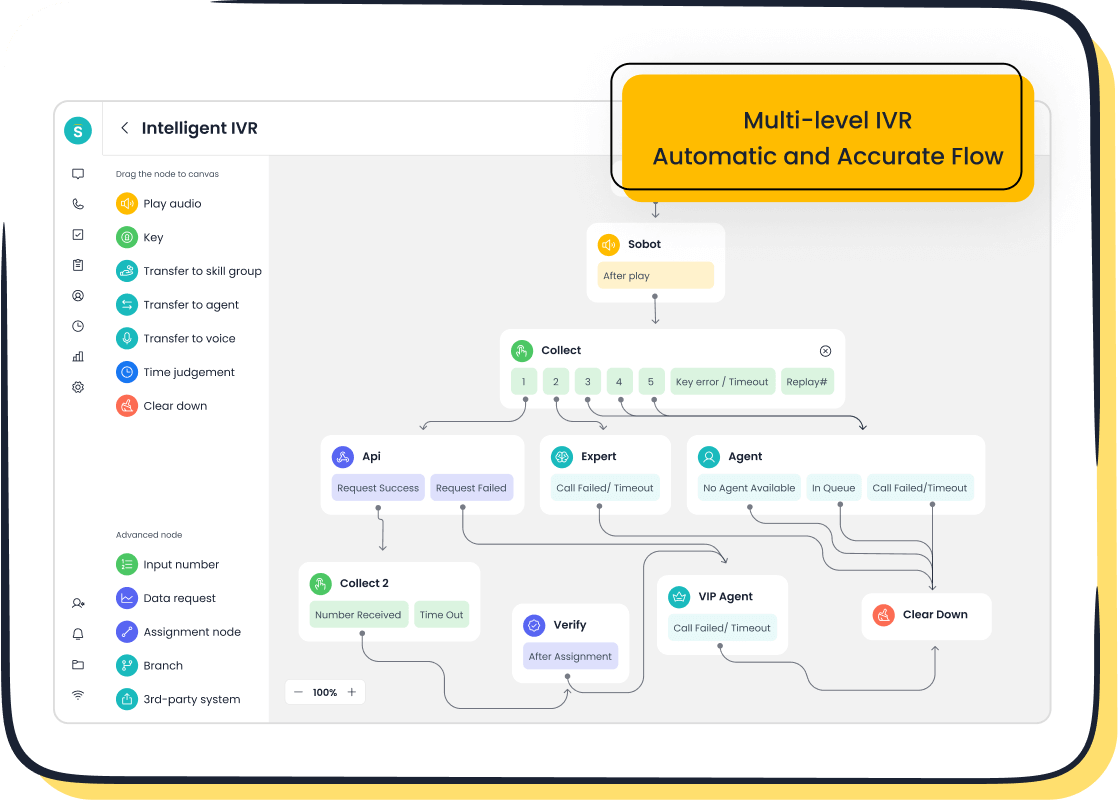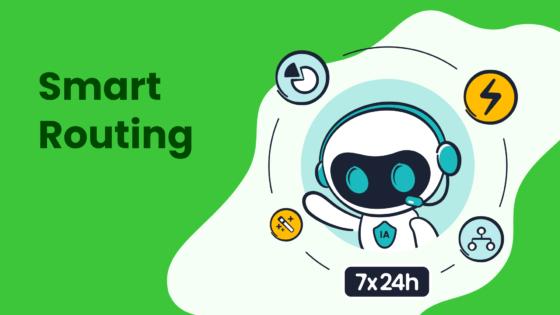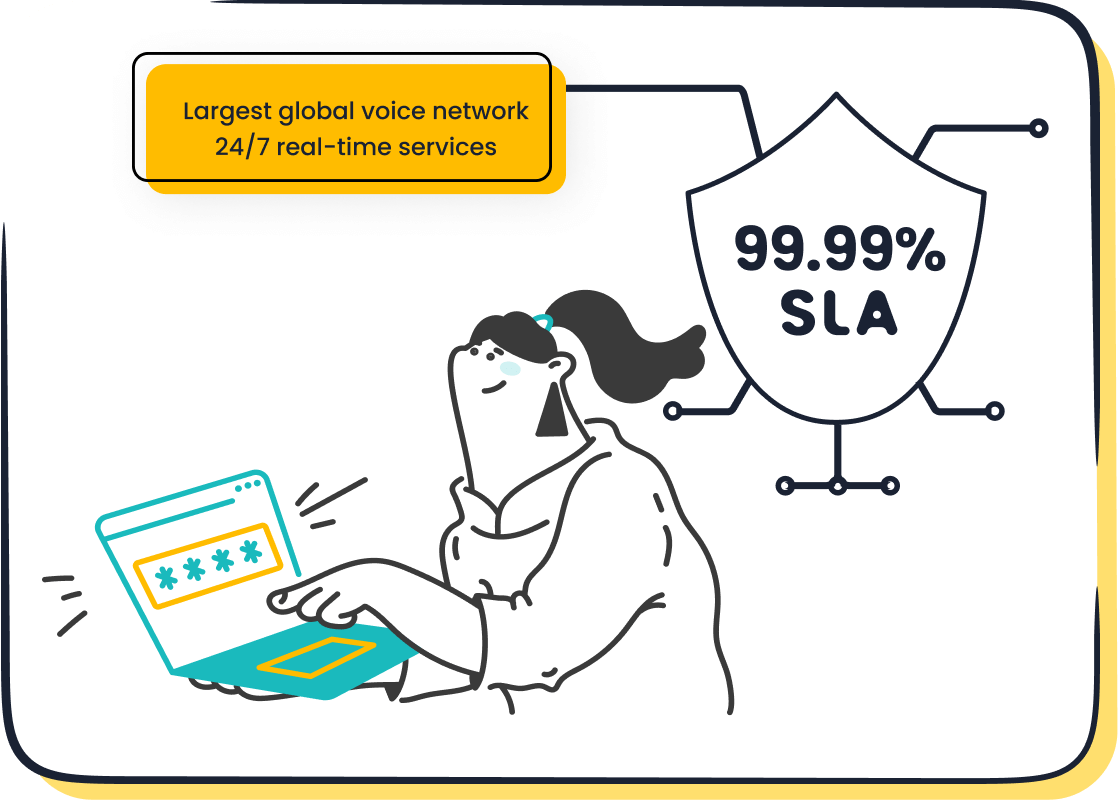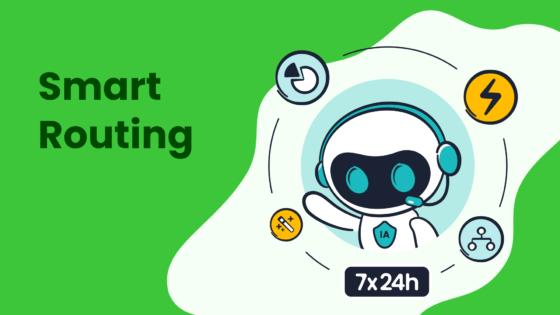Build a Multi-Channel Contact Center in 5 Steps

Building a successful multi channel contact center is an achievable goal. You can create a great customer experience with a clear, five-step process. This multichannel contact center strategy helps you meet customer expectations, as 90% of customers want immediate contact for customer support. A strong multichannel approach is key.
This roadmap guides your multi-channel support efforts:
- Assess customer needs
- Select the right technology
- Design integrated workflows
- Train your agents
- Launch and optimize
Following these steps helps you build a cohesive multichannel experience. You can create a modern customer support center that drives loyalty across all communication channels. The Sobot call center, powered by Sobot AI, offers a multichannel contact center service to unify communication. Let Sobot help you manage every contact and improve your multi-channel support. Embark on Your Contact Journey.
Step 1: Assess Needs for Your Multi Channel Contact Center
The first step in building your multichannel contact center is a thorough assessment. This foundation ensures your strategy aligns with customer expectations and business goals. A successful multichannel experience begins with understanding your audience and defining what success looks like for your customer support team.
Identify Where Your Customers Are
Before you can offer effective multi-channel support, you must know which communication channels your customers want to use. You can discover this by analyzing your current contact data. See where your inquiries come from. You can also directly survey your customers about their preferences for communication. This research is vital for your multichannel contact center. It helps you focus resources on the channels that matter most, improving the overall customer communication experience.
💡 Pro Tip: Avoid Common Pitfalls Businesses often face challenges when launching a multichannel service. A primary challenge is determining the right channels for your customers. You must identify the channels your customers want to use while considering costs and potential satisfaction. This initial step prevents you from investing in outdated or unpopular communication channels for your contact center.
Define Goals to Boost Customer Satisfaction
Once you know where your customers are, you need to set clear objectives for your multichannel contact center. These goals will guide your technology choices and agent training. Your aim is to create a seamless customer support experience that boosts satisfaction. Key goals for your multichannel contact center often include:
- Improving First Contact Resolution (FCR): Solving customer issues during the first contact.
- Increasing Customer Satisfaction (CSAT): Measuring and improving customer happiness with your service.
- Reducing Wait Times: Making your multi-channel support faster and more efficient.
Different channels have different response time expectations. Understanding these benchmarks helps you set realistic targets to reduce response times for your contact center.
| Channel | Average Wait Time |
|---|---|
| Live Chat | 1 minute 35 seconds |
| 3 hours 30 minutes |
Setting these goals provides a clear path for your multi-channel strategy. It turns your contact center into a powerful tool for building customer loyalty. Your multichannel contact center should deliver a consistent and positive experience across every contact point.
Step 2: Select the Right Multichannel Technology

After assessing your needs, you must select the right technology for your multichannel contact center. The right tools are the engine of your customer support strategy. They empower your agents and create a smooth customer experience. Your choice of a multichannel platform will define your contact center's efficiency and effectiveness.
Evaluate Unified Platforms
A unified customer support platform is essential for effective multi-channel support. It brings all your communication channels into a single interface. This prevents your agents from switching between different screens to handle a customer contact. A centralized platform gives your team the tools they need for excellent service.
A strong unified customer support platform should offer:
- A 360-Degree Customer View: Agents can see all past conversations and purchase history in one place.
- Omnichannel Workspace: Your team can manage voice calls, emails, chats, and social media from a single dashboard.
- Built-In Knowledge Base: Agents get quick access to answers without leaving the customer contact screen.
Sobot’s Omnichannel Solution is a great example of a unified customer support platform. It brings all your communication channels, like voice, chat, and email, into one AI-enhanced workspace. This system also provides seamless integration with CRMs like Salesforce, giving your team a complete view of every customer contact. This level of integration is key for a modern multichannel contact center.
Plan for Scalability and Integration
Your technology must grow with your business. When you select a multichannel platform, plan for future scalability. Your system should handle an increase in contact volume without a drop in service quality. A cloud-based multichannel contact center allows you to scale your operations up or down as needed. You can also leverage AI and automation to improve efficiency.
Proper integration connects your multichannel contact center with other business systems. APIs (Application Programming Interfaces) are crucial for this. They allow different software to share data, breaking down information silos. This creates a truly connected experience. When your channels are integrated, you build an omnichannel contact center. This ensures a customer can start a conversation on chat and continue it over the phone without repeating themselves. This seamless communication is the goal of excellent multi-channel support and modern contact center services.
Step 3: Design an Integrated Customer Experience

With the right technology in place, your next step is to design a truly integrated customer experience. This is where you connect your communication channels to create a single, seamless journey. A well-designed multichannel experience ensures customers feel understood at every contact point, which is essential for building trust in your customer support service. Your goal is to make every contact with your center a positive one.
Map the Cross-Channel Journey
To build a great multichannel experience, you must first understand how customers move between your communication channels. You can create flowcharts that visually map this journey. For example, a map might show how a customer starts a contact with a chatbot and then smoothly transitions to a live agent without losing the conversation history. This process helps you identify potential pain points in your customer communication.
🗺️ Journey Mapping Best Practices A successful map is more than just a diagram. You should create different maps for each customer persona and involve teams from across your business. Treat your map as a living document, updating it as customer behaviors and your communication channels evolve. This ensures your multi-channel support remains effective.
This mapping makes your multichannel contact center more intuitive. It helps you design a high-quality experience where every contact feels connected. A strong map is the blueprint for your entire multichannel customer support service.
Standardize Routing and Escalation
Once you map the journey, you need to standardize how you manage each contact. This involves setting up intelligent routing and clear escalation paths. The aim is to connect customers to the right agent on the first contact. Skills-based routing is a powerful strategy for your multichannel contact center. It directs inquiries based on agent skills, such as language proficiency or product knowledge, ensuring the best person handles the contact.
This process ensures a smooth handoff between channels and agents. When a contact moves from a bot to a person, the agent should have the full context. This prevents customers from repeating themselves and improves the service experience.
Platforms like Sobot make this simple. You can use features like a drag-and-drop IVR builder and smart call routing to direct every contact efficiently. You can configure rules based on the channel, customer history, and agent availability. This level of control is vital for a modern multichannel operation, turning every contact into an opportunity to strengthen customer relationships. This is the core of excellent multi-channel customer communication and a successful multichannel center.

Step 4: Train Your Agents for Multi-Channel Support
Your technology is only as good as the people who use it. Proper training is critical for the success of your multichannel contact center. You must equip your agents with the skills to manage customer communication across all your channels. This step transforms your team into a versatile multi-channel support force, ready to deliver an excellent service experience with every contact.
Develop a Comprehensive Training Program
You must develop a comprehensive training program for your multichannel center. This program should go beyond basic product knowledge. It needs to build both technical and soft skills for multi-channel communication. A great training plan ensures every agent can handle any customer contact effectively.
Your program should include:
- Practical Skill Application: Use role-playing and simulations to give agents a safe space to practice handling a difficult contact. This builds confidence for real customer support situations.
- Soft Skills Development: Focus on essential skills like empathy and active listening. This improves the quality of every customer contact and leads to faster resolutions.
- Engaging Delivery: Mix your methods with videos, quizzes, and group discussions to keep agents engaged. This makes the learning experience more effective for your center.
This approach prepares your team for the dynamic nature of multi-channel customer support.
Create a Centralized Knowledge Base
A centralized knowledge base is your team's single source of truth. It empowers agents to find accurate answers quickly during a customer contact. This tool is essential for providing consistent service across all your multi-channel platforms. It reduces guesswork and helps your center resolve issues on the first contact. A strong knowledge base is a cornerstone of an efficient multichannel contact center.
A unified knowledge base boosts agent productivity and improves key metrics. It provides instant access to solutions, which reduces hold times and elevates first-contact resolution rates. This ensures a consistent and precise customer experience.
Modern knowledge base software integrates directly into your agent workspace. Look for features like AI-powered search and seamless integrations with your CRM. This gives your team complete context for every contact. This powerful tool helps your agents deliver a superior multichannel service and strengthens your entire customer support operation.
Step 5: Launch, Measure, and Optimize
The final step is to launch your multichannel contact center and begin the cycle of continuous improvement. Your work is not over once the system goes live. You must measure performance and optimize your operations to ensure long-term success and a superior customer experience.
Implement a Phased Rollout
You should launch your new system in stages. A phased rollout allows you to test your new multi-channel workflows with a small pilot group. This approach minimizes risk. You can identify and fix issues before they affect your entire customer support operation. Feedback from this initial group helps you refine the process, ensuring a smoother transition for the rest of your center. This strategy builds momentum and prepares your team for a successful full-scale launch.
Track Key Performance Indicators (KPIs)
You cannot improve what you do not measure. Tracking Key Performance Indicators (KPIs) is essential for your multichannel contact center. These metrics show you what is working and where you need to make changes.
Key metrics for your multi-channel center include:
- First Contact Resolution (FCR): The percentage of inquiries resolved on the first contact.
- Customer Satisfaction (CSAT): A measure of customer happiness. You calculate it by dividing the number of positive responses by the total responses and multiplying by 100.
- Average Handle Time (AHT): The average duration of a single contact. This is measured differently across channels.
| Channel | AHT Calculation Components |
|---|---|
| Voice Calls | Talk time, hold time, and after-call work |
| Total time spent on the communication | |
| Live Chat | Total handle time across all concurrent chats |
Monitoring these KPIs helps you maintain a high-quality service and improve customer retention.
Continuously Iterate and Improve
Use the data you collect to drive continuous improvement. Analyze trends in your communication to understand customer behavior and optimize your multi-channel support. A systematic approach involves gathering feedback, identifying root causes, and implementing targeted solutions. This creates a powerful cycle of iteration that enhances the customer experience.
For example, the financial service platform Opay transformed its customer support by implementing Sobot's omnichannel solution. By analyzing performance data and optimizing workflows, Opay achieved remarkable results. The company increased customer satisfaction from 60% to 90% and reduced overall costs by 20% (read the full story). This shows how the right tools and a focus on optimization can boost satisfaction and customer retention. A commitment to improvement turns your center into a key driver of business growth.
Building a successful multi channel contact center is within your reach. You can create a superior service by following this multi-channel roadmap.
- Assess your customer needs and define clear goals.
- Select the right technology to unify your communication channels.
- Design an integrated journey for every contact.
- Train your team for excellent multi-channel support.
- Launch & Optimize your center with data-driven insights.
This structured approach helps you build a cohesive multichannel experience. You can meet customer expectations, as 90% of consumers want a consistent experience across all channels. A great multichannel contact center turns every contact into an opportunity to build loyalty. Your customer support service becomes a key driver for business growth.
Embark on Your Contact Journey. Discover how Sobot’s solutions can transform your customer communication at sobot.io.
FAQ
What is a multi-channel contact center?
A multi-channel contact center allows you to support customers across various communication channels like voice, email, and live chat. It centralizes these interactions, helping your team manage customer communication more efficiently and provide a consistent service experience.
Why is a multi-channel approach important?
A multi-channel approach is vital because customers expect choices. It allows you to meet them on their preferred channels. This improves customer satisfaction and loyalty. For example, Sobot helped Opay boost its customer satisfaction from 60% to 90% with a unified solution.
How does AI improve a contact center?
AI automates repetitive tasks and provides instant support through chatbots. This frees up your agents to handle more complex issues. AI-powered tools, like Sobot's, can also analyze data to give you insights for improving your customer service operations.
Can I integrate a new system with my existing CRM?
Yes, modern platforms are designed for easy integration. Sobot’s Omnichannel Solution, for instance, connects seamlessly with CRMs like Salesforce. This gives your agents a complete view of the customer's history, which helps them provide faster, more personalized support.
See Also
A 10-Step Guide to Deploying Omnichannel Contact Center Solutions Effectively
Your Essential Handbook for Omnichannel Call Center Software Selection
Discovering the Key Features of Leading CRM Call Center Software
Comprehensive Reviews of the Best Cloud Contact Center Services for 2024
